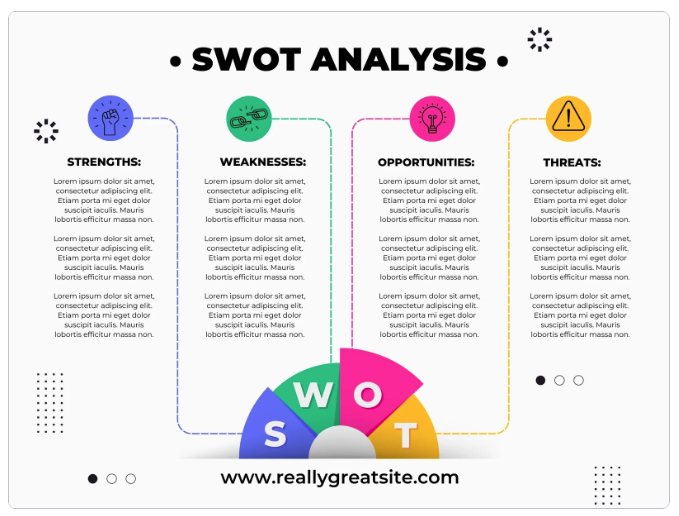Starting or growing a business without understanding your market is like setting sail without a map—you might move forward, but you won’t know where you’re headed. That’s where market research comes in.
Whether launching a new product, expanding into new markets, or simply trying to stay competitive, market research gives you the insights you need to make smarter decisions. In this blog, we’ll break down what market research is, why it’s crucial and how you can use it to find new opportunities, avoid costly mistakes, and build a brand that connects with your audience.
What is market research?
Market research is a small but critical part of marketing. While marketing covers everything a business does to attract and retain customers, including public relations, sales strategies, customer support, advertising, and product pricing, market research specifically focuses on gathering information.
In simple terms, market research is an ongoing, organized, and objective process of learning about your customers, competitors, and the overall marketplace. It helps you answer key questions such as:
- Who are my customers?
- Who are my competitors?
- What is happening in my industry?
Investigating these areas gives you valuable insights that can guide your business decisions.
Why do research?
Although market research can be time-consuming and require significant effort, it is essential for building a successful business. Here’s why it’s so important:
- Validate your idea(s): Determine if there is real demand for your product or service. Without demand, even the best ideas won’t succeed.
- Make better decisions: Research allows you to make smarter decisions about product development, marketing, sales, and business strategy.
- Discover opportunities: Identify gaps in the market or unmet customer needs so you can open new business opportunities.
- Choose the best path: If you are torn between different business ideas, market research will help clarify which idea has a better chance of success.
In short, research about your market helps reduce risk, increase your chances of success, and ensure that you’re building a business based on real customer needs, not just assumptions.
When should I do market research?
You should conduct research at several key points throughout the life of your business:
Before starting your business – Market research is essential before you launch your business. It helps you determine whether your idea is viable, whether there is real demand for your product or service, who your potential customers are, and who your competitors will be. Questions that market research at this stage of your business can help you answer include:
- Is there a need?
- Who will buy your product/service?
- What are their requirements?
- How are you going to find customers?
- What price are people willing to pay?
- Who else is providing this product/service?
- Is the market saturated?
- Is this an area with an expanding or declining market?
- Is there a profit margin?
Without this information, you risk investing significant time, effort, and money into a business that may not succeed.
Before expanding your business – Once your business is established, you may want to grow by launching a new product, offering new services, or entering new markets.
Research will help you confirm if your existing customers are interested in your new offerings, identify new customer segments or markets and introduce product enhancements or new products or services that can expand your product portfolio. Questions that market research at this stage of your business can help you answer include:
- Do customers have unmet needs?
- Is there a new untapped market?
- Are customers ready for a new product or service?
- Are customers satisfied?
- Are your prices in line with the competition?
- Do you have new competitors?
- Are your existing competitors introducing new products or services?
- Are there new marketing channels?
Throughout the life of your business – The marketplace constantly changes—customer preferences evolve, industries shift, and new technologies emerge. Continual market research helps you stay updated on industry trends, adapt to changes in the marketplace and avoid becoming outdated or irrelevant.
Like the well-known example of Blockbuster, which failed to adapt to digital streaming trends, regular research allows you to make smarter business decisions, stay competitive, and ensure long-term success.
Help with SWOT analysis
Market research is crucial for effective SWOT analysis (Strengths, Weaknesses, Opportunities, and Threats) so you can understand your internal capabilities and external environment.
Strengths and weaknesses are internal factors within your control. Market research can help you assess these by gathering feedback from customers, identifying what you’re doing well (strengths) and where you may be falling short (weaknesses). For example, customer surveys or online reviews might reveal that your customer service is highly rated (a strength) but your pricing is considered too high (a weakness).
Opportunities and threats are external factors outside your business that you can respond to but cannot control. Market research helps you spot new opportunities (such as unmet customer needs or emerging market trends) and recognize potential threats (like shifting consumer preferences, economic downturns, new competitors, or regulatory changes such as tariffs).
Market research can also help you perform a SWOT analysis on your competitors, giving you a broader understanding of your position in the marketplace and areas where you can gain a competitive edge.

Source: SWOT templates on Canva
About primary market research
Primary market research involves collecting new, original data directly from your target audience or competitors. Instead of relying on information already available (which is secondary research), you actively seek the specific insights you need.
It’s highly targeted because you design it around the questions you want answered for your business. Primary research methods include:
- Surveys (~5 questions and quick to complete) and questionnaires (~10–15 questions for more profound insights) – Can be conducted in person, by phone, by mail, or online. Online tools like SurveyMonkey and others make creating surveys easy, although you should consider your target audience—for example, older adults may prefer non-digital options.
- Interviews – These are one-on-one conversations in person, by phone, or online. They usually last 30 minutes or less.
- Focus groups – When a small group (5–10 people) is brought together for a guided discussion on a specific topic. These are best for gathering opinions, feelings, and beliefs.
- Mystery shopping – This is when you visit competitors posing as a regular customer to observe their products, services, pricing, and customer experience. It helps you learn how to differentiate your business and spot areas for improvement.
- Product or service sampling or beta trial – This method lets potential customers try a version of your product or service. It also allows you to gather feedback to refine and improve before a full market launch.
Primary market research provides direct, customized insights that secondary research often cannot. It helps you deeply understand your market, fine-tune your product or service, and make smart, evidence-based business decisions.
About secondary market research
Secondary market research involves using information that has already been collected, analyzed, and published by other organizations. Instead of gathering new data yourself (like you would in primary research), you find existing research and interpret it to meet your business needs.
Secondary research may not answer all your questions exactly, but it can still provide valuable insights. It often requires analysis and interpretation to fit your situation. Examples of secondary market research sources include:
- Government reports (e.g., Statistics Canada, U.S. Census Bureau)
- Industry studies by trade associations
- Market research reports from consulting firms (sometimes free, sometimes paid)
- Articles in newspapers, magazines, and trade journals
- Business directories and databases (often available through public or university libraries)
- Academic studies from universities
- Company reports and financial statements
- Online resources from reputable websites (.gov, .edu, .org)
Secondary market research is faster and less expensive than conducting primary research. It lets you quickly understand market size, trends, demographics, and competitors, which helps back up your assumptions and forecasts with credible data. It also enables you to stay informed about external factors impacting your business.
When looking at secondary market research sources, always evaluate their credibility. Remember that the data might not be perfectly tailored to your specific market or question, and sometimes, older data is the only data available.
Get help with your market research!
Research of your market isn’t just a nice-to-have—it’s a must-have for anyone serious about building a strong, resilient business. Whether you’re just starting out, planning to expand, or simply looking to stay ahead of changing trends, good research gives you the confidence to move forward wisely.
Ready to take your next step? Let’s talk!
